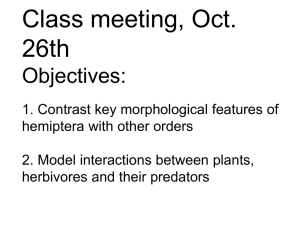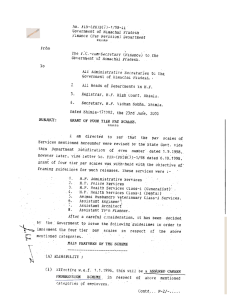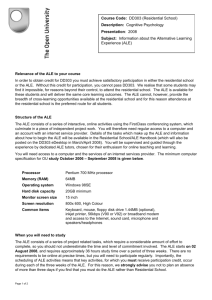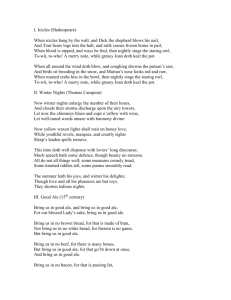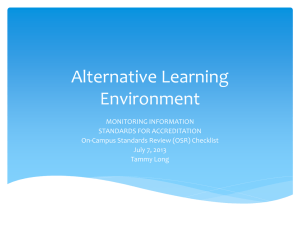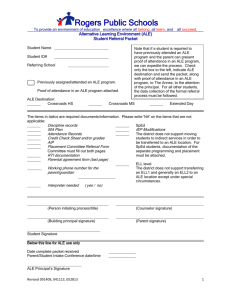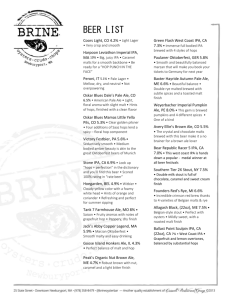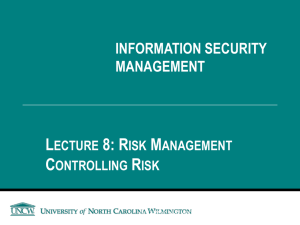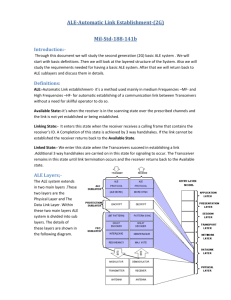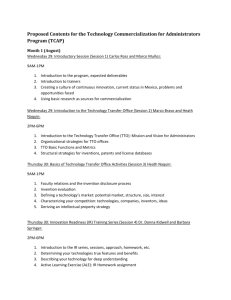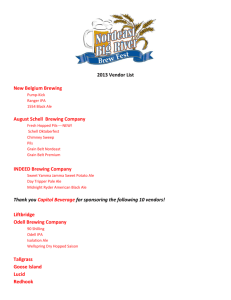ALE - CAP Members
advertisement
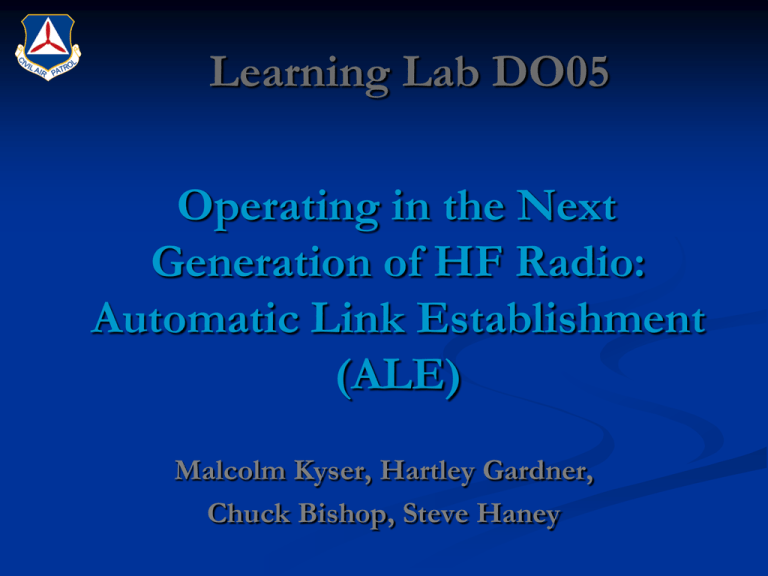
Learning Lab DO05 Operating in the Next Generation of HF Radio: Automatic Link Establishment (ALE) Malcolm Kyser, Hartley Gardner, Chuck Bishop, Steve Haney Why HF? Advantages of HF Medium to long distance communications Adaptable Fixed, mobile or tactical Survivable Infrastructure independent Works when everything else fails Low (or no) operating costs No recurring charges, air time or usage fees Disadvantages of HF Propagation limitations Conditions always in flux No single channel works all the time Diverse channels needed Requires understanding of propagation Antenna size Limits station locations Noisy operations Gets turned down or ignored Why ALE? Advantages of ALE Next generation of HF Frequency agile Moves us beyond single channel “conventional” mode Takes advantage of changing propagation conditions Active propagation evaluation Soundings in real-time On board database Advantages of ALE Automated calling and linking Quiet when not in use “Hands-Free” Reduces instances of “turn down”, “turn off” or “ignore” Limited text capability Using built in modem Disadvantages of ALE None ALE Challenges Point-to-point Like a phone call rather than a “broadcast” Comm planning is essential Possible hybrid applications of conventional and ALE Soundings interrupt voice communications Operator training Planning is important Sounding data degrades in value over time Use of BIDR ALE Challenges Calling is not instantaneous Operator training Several possible reason for link failures Operator training ALE System Structure Over 100 HF frequencies Nine nets Designated message center stations Tactical and C2 National Command Net (Net 9) NER Net 1 MER Net 2 GLR Net 3 SER Net 4 NCR Net 5 SWR Net 6 RMR Net 7 PCR Net 8 NER Wings MER Wings GLR Wings SER Wings NCR Wings SWR Wings RMR Wings PCR Wings Equipment How will ALE be used? Tactical Day to day when beyond range of repeater In a disaster scenario Ground team to ICP Ground team to ground team Command and Control As a survivable back up Forward operating base to ICP ICP to area command Area command to NOC Unit to group, to wing, to region, to NHQ Constant Watch ‘11 National Communications Exercise Intent: Snapshot of our starting point with ALE Simulated New Madrid Earthquake Stress the system Tasking messages from NOC to wings Pre-formatted resource report messages from wings to NOC Side test of mobile ALE on-site reporting Limited AMD testing ALE Looking Forward Constant Watch – Lessons Learned The system can take much more traffic than we anticipated The plan was not clear enough. Regions/wings did not generate traffic The overall network structure needs to be better understood Stations need to understand which net they belong to Stations need to understand primary and possible alternate routes for traffic Our formal message handling skills are “rusty” Region message center stations need two radios Multi-net is not a good solution – obscenely long soundings ALE Looking Forward Constant Watch – Lessons Learned Message center stations need to understand their role and responsibilities Wings need to appoint message centers We need some sort of “any” call on ALE Need a “BIDR From” display on Micom 3 A “Sounding” display would be helpful on the Micom 3 Mobile operators need to understand their radiation pattern Don’t do BIDR’s out of curiosity! Preformatted messages WORK! AMD needs to be leveraged ALE Looking Forward AMD for text messaging Proved to be an outstanding weak signal asset Immediately available with no extra costs Standard format being developed Will utilize the “pre-formatted” message concept Deliverable Product: Extend WMIRS beyond the internet Questions?
